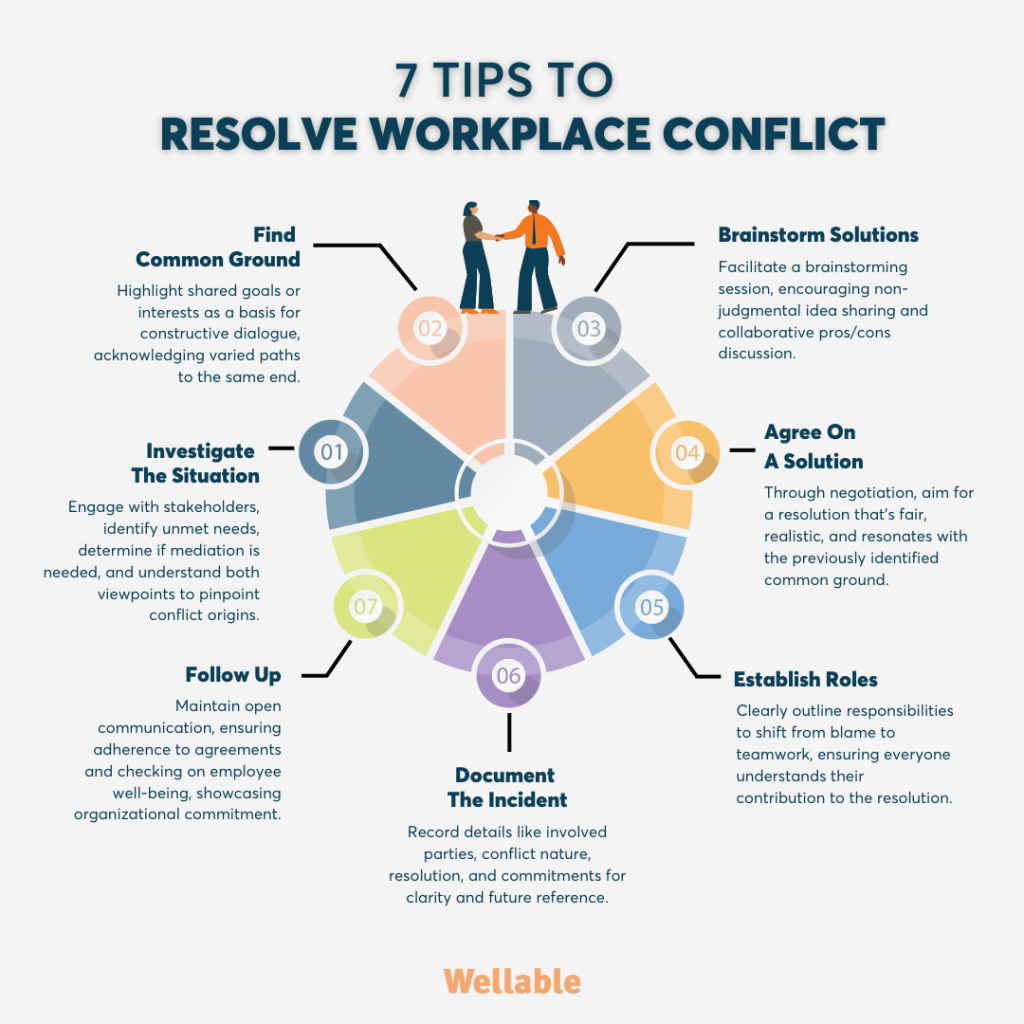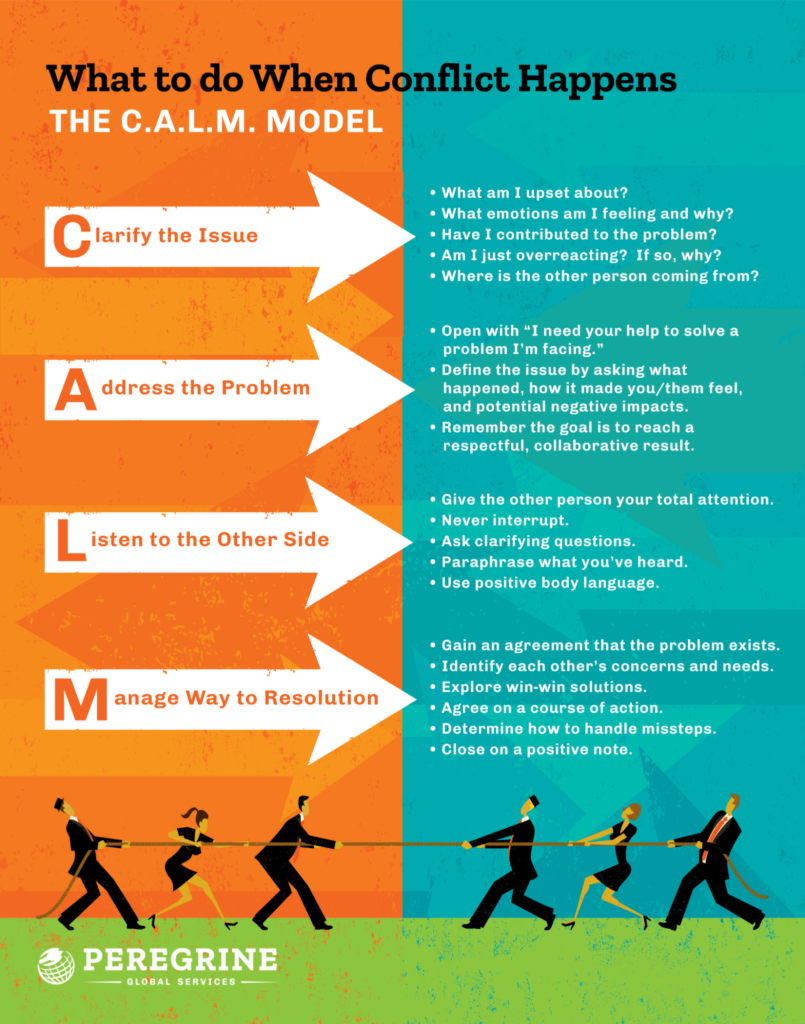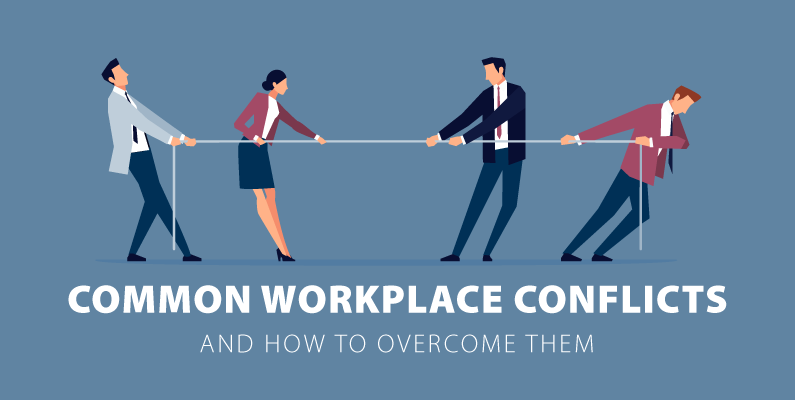How To Deal With Conflict Between Two Employees

The air in the office hangs thick, not with the usual buzz of productivity, but with a palpable tension. Sarah avoids eye contact with Mark near the coffee machine, and their once-frequent brainstorming sessions have dwindled to terse email exchanges. The underlying hum of workplace harmony is now a discordant note, threatening to disrupt the entire team’s rhythm.
Navigating conflict between employees is a crucial skill for any manager or team leader. When handled effectively, disagreements can be a catalyst for innovation and stronger working relationships. However, left unaddressed, these tensions can escalate, impacting morale, productivity, and even leading to employee turnover.
Understanding the Roots of Conflict
Workplace conflict is almost inevitable. Differing personalities, communication styles, and approaches to problem-solving can all contribute. According to a study by CPP Global Human Capital Report, "Unresolved conflict can lead to project failure."
Sometimes, the root cause is a simple misunderstanding. Other times, it might stem from deeper issues like competition for resources or perceived unfair treatment. Identifying the underlying cause is the first step towards resolution.
Active Listening is Key
When conflict arises, it's crucial to provide a safe space for each employee to share their perspective. Encourage active listening, where each person focuses on understanding the other's viewpoint without interruption or judgment. This doesn't mean agreeing, but rather acknowledging and validating their feelings.
Paraphrasing what you've heard back to the individual ensures understanding and demonstrates empathy. For example, you might say, "So, if I understand correctly, you're feeling frustrated because..."
Facilitating a Constructive Conversation
Once each party has had a chance to speak, facilitate a structured conversation. Guide the discussion towards identifying specific issues rather than focusing on personal attacks. Encourage the use of "I" statements to express feelings and needs without blaming the other person.
For instance, instead of saying "You always undermine my ideas," encourage them to say, "I feel undermined when my ideas are dismissed without consideration." This shifts the focus from accusation to personal experience.
Mediation Strategies
In some cases, direct communication between the conflicting parties might not be enough. As a mediator, your role is to guide the conversation towards a mutually acceptable solution.
Help the employees brainstorm potential solutions together. Encourage them to focus on finding common ground and areas of agreement, even if they seem small at first. Don't impose solutions, but rather facilitate the process of them finding their own.
Document the agreed-upon solutions and create a plan for follow-up. This ensures accountability and provides a framework for future interactions.
When to Seek External Help
Some conflicts are too complex or deeply rooted for internal mediation. In such cases, consider seeking help from an external HR professional or mediator. They can offer an unbiased perspective and specialized expertise in conflict resolution. HR policies regarding workplace conflict should be clearly defined and accessible to all employees.
According to the Society for Human Resource Management (SHRM), "A clear, well-communicated conflict resolution policy can significantly reduce the negative impact of workplace disputes." Early intervention is always preferable, as it can prevent escalation and minimize disruption.
Preventing Future Conflicts
Proactive measures can significantly reduce the likelihood of future conflicts. Promote open communication and encourage employees to address concerns early on. Foster a culture of respect and empathy, where differences are valued and disagreements are handled constructively.
Team-building activities and workshops on communication and conflict resolution skills can also be beneficial. These initiatives help build stronger relationships and equip employees with the tools they need to navigate disagreements effectively.
Addressing conflict between employees isn't just about resolving immediate problems; it's about building a stronger, more resilient team. By creating a culture of open communication, empathy, and constructive problem-solving, you can transform disagreements into opportunities for growth and innovation. The ability to navigate these situations effectively is not just a skill, but a vital component of leadership, shaping the overall well-being and productivity of the workplace.

















